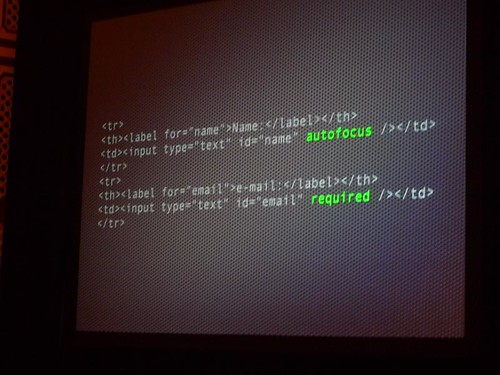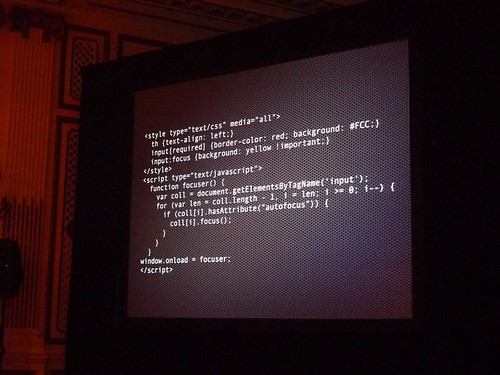Eric Meyer: Javascript will save us all

"The really big shift that is happening... is the shift of the web becoming a client-side computing platform," said Sir Tim Berners Lee a few months ago.
The underlying tools to make non-compliant web browsers (cough, IE6, cough) behave properly, have been possible because of Javascript. This is the one language we need to focus on as front-end web developers.
The first thing the IE6 team looked at when they went to work on a better browser was the IE7.js file from Dean Edwards, and the Position is Everything hack site.
John Resig, creator of JQuery, ported the whole Processing programming language into Javascript.
Mozilla's JetPack lets you write little browser tools with 50 lines of code or less. Bespin is a complete web development environment in a web browser.
As browsers mature, their Javascript engines get 10x better. But be careful with using Javascript, because it doesn't always degrade gracefully. In fact, most Javascript is written with no accessibility in mind.
On the other hand, Derek Featherstone has created something in Javascript that helps make accessibility better. It scans through a web page and looks for a Flash movie file, then creates keyboard controls to let the user pause, skip, and play the video. Now YouTube supports this methodology.
HTML 5 has some new attributes like "autofocus" and "required" which make form validation much easier for the developer.
In reality, we aren't ready for HTML 5 yet. But with some very simple Javascript and CSS, you can make all browsers work this way.
Standards are moving in the right direction though. Here are all of the input types available in HTML 5:
JSS stands for Javascript Style Sheets. It's a jQuery plugin that lets you use jQuery selector in your CSS.
Aaron Gustafson has built something called eCSStender, which lets you extend CSS with Javascript. It uses the vendor prefix idea (like -moz, -webkit, etc) to let you create your own rules.
It's happening now. Plenty of awesome for everyone, no waiting. The standards people should start writing down what we do, instead of telling us what to do. The evolution of the web will speed up.
More from Event Apart 2009:





